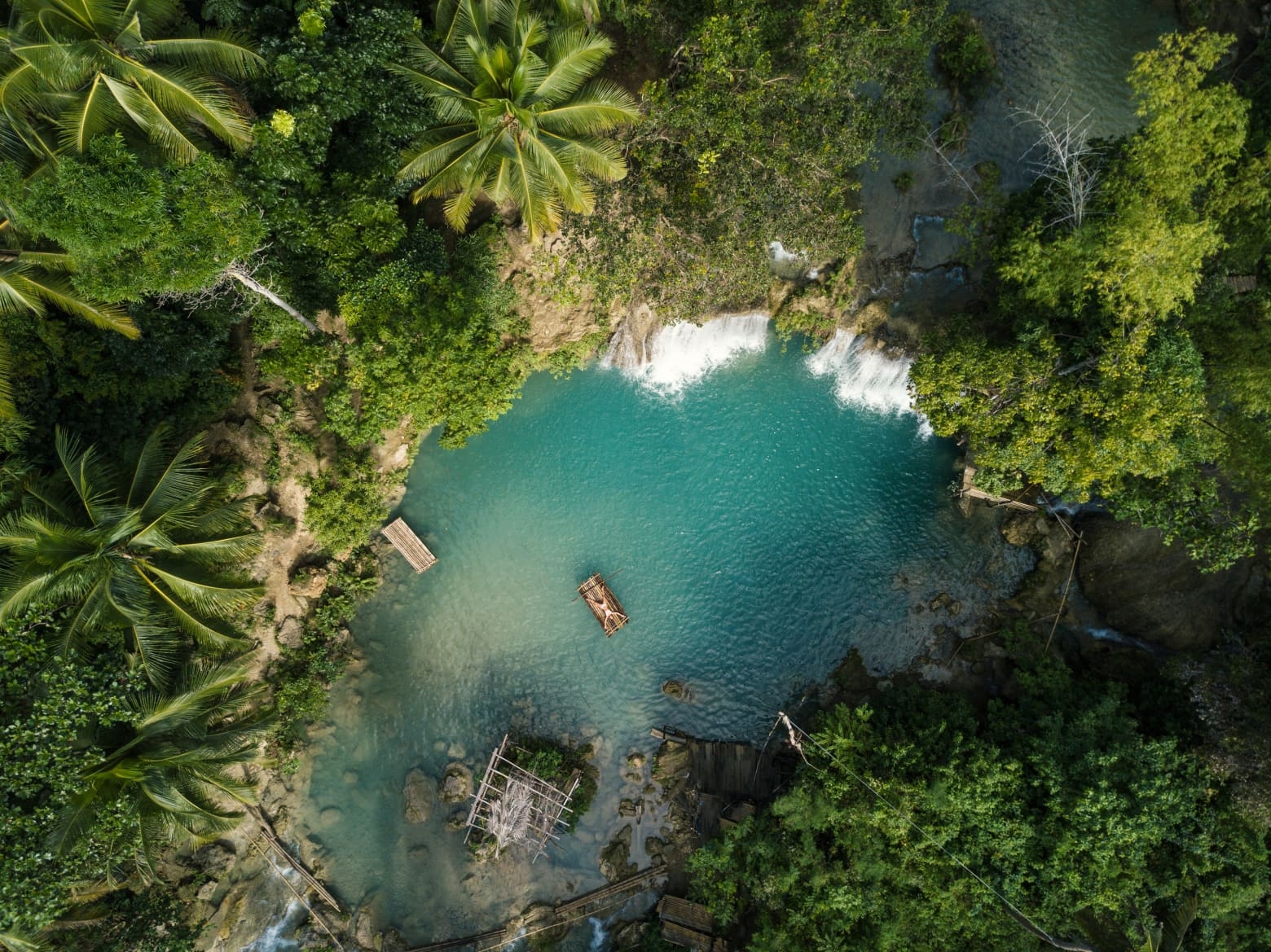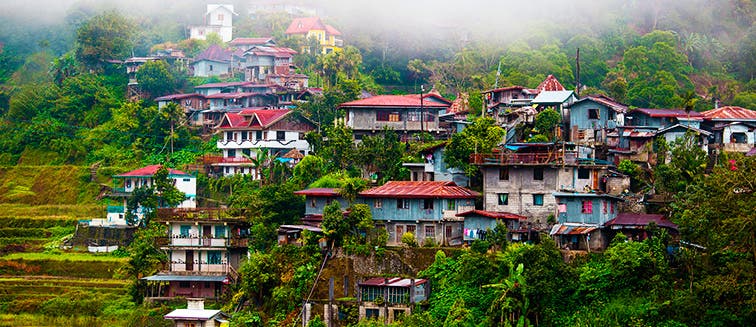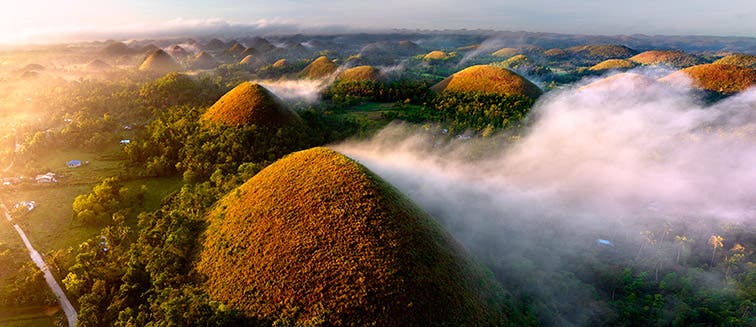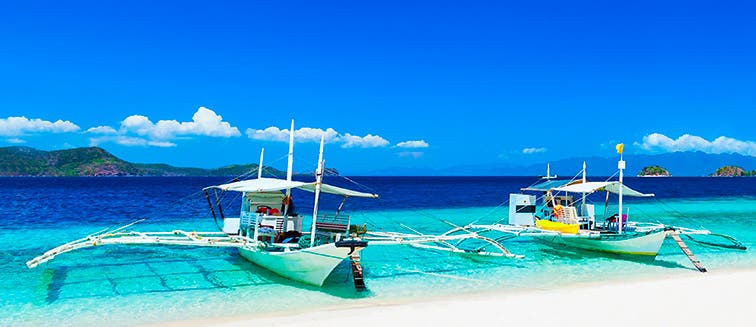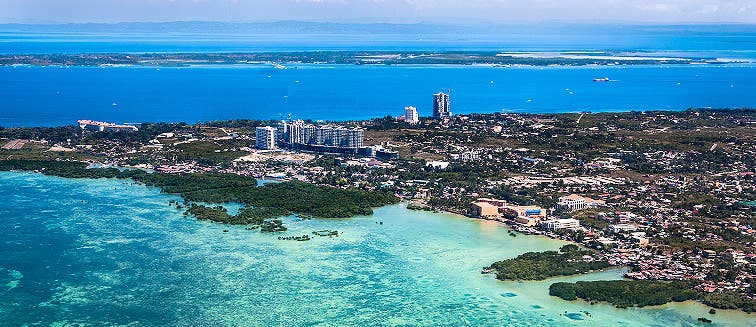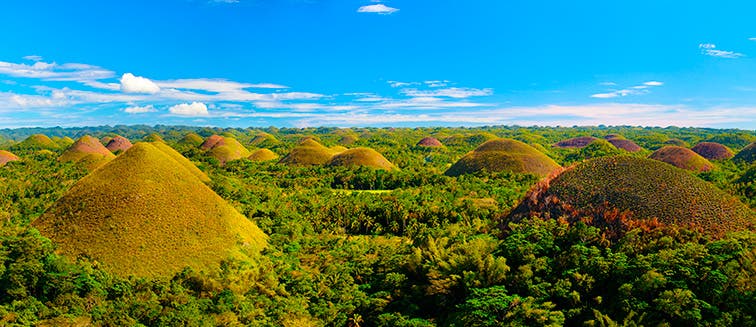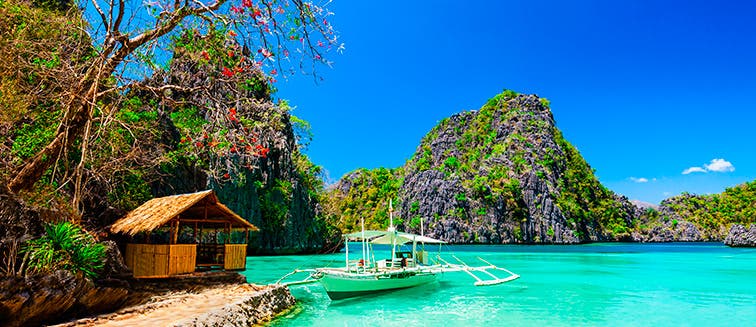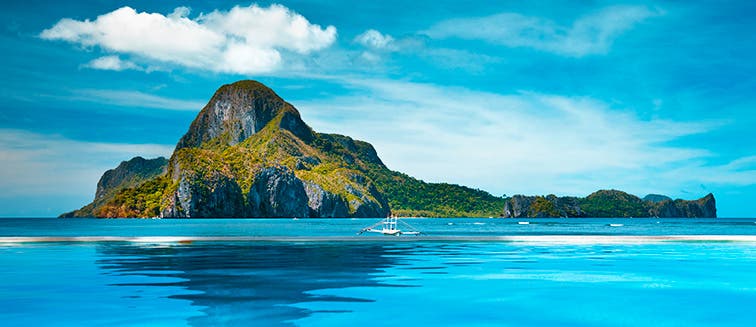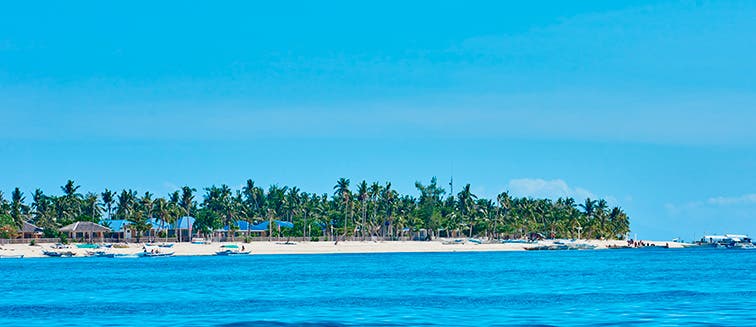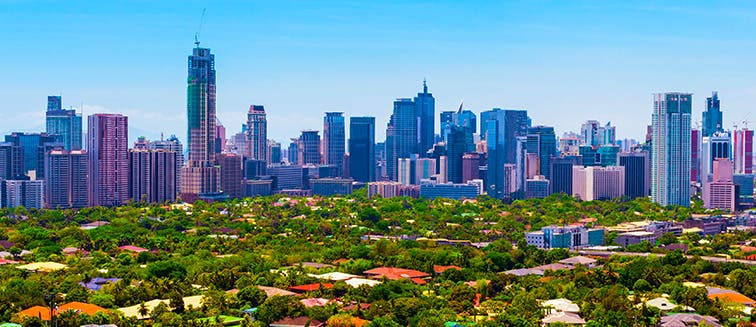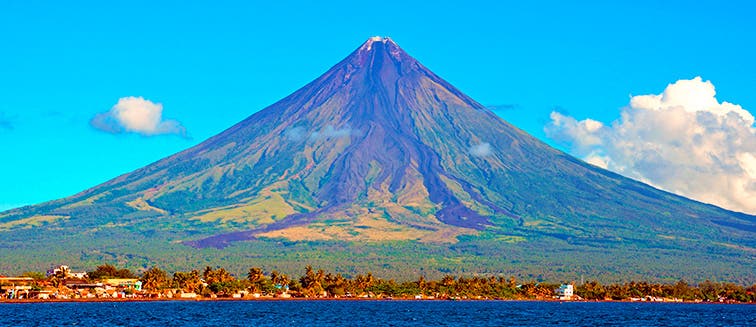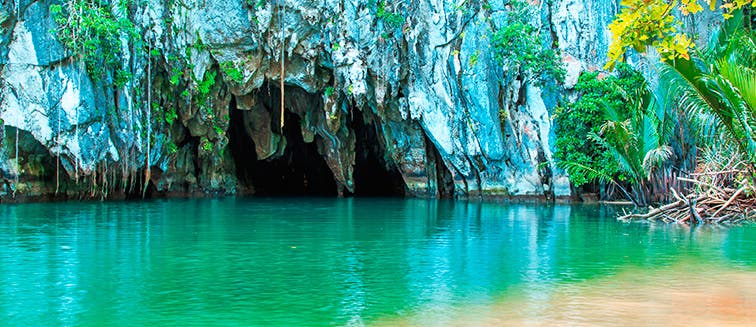Known for its luscious beaches, the Philippines is an archipelagic nation composed of more than 7000 islands in Southeast Asia. The thought of a trip to the Philippines conjures up vivid images in a vibrant palette of colors; think eye-popping bright blue oceans, emerald rice fields and underwater coral reefs in a rainbow spectrum of pigments.
Situated in the western Pacific Ocean, the Philippines is a far-flung travel destination. Largely untouched by mass tourism it remains a paradise for beach-lovers as well as lovers of nature, as its home to some of the world’s greatest biodiversity. The capital, Manila, is known for its colonial-era architecture and was historically one of the world’s original ‘global cities’, due to its importance in global trade routes.
Although its geographical situation places it in Asia, the Philippines can sometimes feel a world away in terms of culture due to the centuries spent under Spanish rule, and English is one of the country’s official languages. A Philippines holiday package is simply incomplete without getting to know the locals. Known for their warm hospitality and genuine smiles, Filipino friendliness is famous world-wide. On a tour of the Philippines, you can choose between the numerous different islands to suit your desired travel style or island-hop instead to get a good overview of the nation as a whole. Trek volcanoes on Luzon, find isolated beach bliss along the coast of Palawan or explore magical underground rivers in Puerto Princesa. Simply put, the Philippines is nature at its finest.
History of the Philippines
The history of this paradise archipelago is largely characterized by its 300-year rule by Spain. Before Europeans arrived on the islands, the Philippines had strong trade and cultural links with Chinese, Indian, Arabic and Malay nations. Hispanic colonization began in 1521 when Portuguese explorer Ferdinand Magellan arrived, leading a fleet for the Spanish.
Just over 20 years later the islands were named after King Philip II of Spain and settlements began to take root across the archipelago, particularly in Cebu and Luzon, where the city of Intramuros, in modern-day Manila, was built. You can still explore the historic walls and buildings of Intramuros during a Philippines tour package today, home to Spanish-era landmarks such as Manila Cathedral and Fort Santiago. Following the conquistadors, missionaries converted the Filipinos to Catholicism, which still remains a strong element of the national culture. Much of the upper-classes prospered under Spanish rule, whilst on the other hand, the majority of workers were subject to poor conditions on vast Spanish-owned agricultural estates. Nationalist feelings gained momentum from the mid-19th-century onwards, culminating in failed revolutions and the bloody Philippine-American War. The USA claimed the Philippines from Spain and attempted to ‘Americanize’ the population, although the unrest of two World Wars made this a turbulent period in the country’s history. In 1946, the Philippines gained independence and today continues to look towards a bright future.
Nature in the Philippines
The 5th-largest island country in the world, the Philippines has a rich natural ecosystem, ranging from thick rainforested highlands and towering volcanoes to El Nido’s pristine beaches, flanked by prehistoric rock formations. Award-winning dive sites, such as the Tubbataha Reefs, situated off the southeastern coast of Palawan and home to half of the world coral species, attract avid divers and marine enthusiasts to explore its underwater world. One of the icons of Luzon, Banaue’s 2000-year rice terraces showcase the beauty of the natural landscapes when fused with ingenious agricultural design and are an unmissable stop on a Philippines travel.
Perhaps the most famous of the Philippines’ natural wonders, the Chocolate Hills, in Bohol, is a weird and wonderful sight of brown, perfectly round hills that rise above the verdant forest. A megadiverse country with amazing wildlife, the Philippines has a large number of endemic species. The tiny tarsier is the star inhabitant, one of the smallest primates in the world and known for its huge, adorable eyes. Mount Mayon, a cone-shaped volcano in the Bicol region of Luzon, is a must-see if you travel to the Philippines. This active volcano is a source of much legend and mystery and is considered sacred by many locals. Above all, the Philippines is nirvana for beach-lovers; from Boracay to Bantayan and Kota Beach to Daplac Cove, an idyllic stretch of white sand is never far away. Accommodation ranging from luxury resorts to humble homestays cater for all budgets, making a Philippines beach holidays a dream-come-true for any traveler.
Culture in the Philippines
A fascinating mix of east-meets-west characterizes Filipino culture, a country where ancient traditions are fused with Western influences. Strong family values, community spirit and respect for others are just three of the mainstays at the heart of Filipino society and the way in which Filipinos choose to live their lives. You’re sure to be welcomed with open arms if you get the chance to meet any locals during a holiday to the Philippines. Furthermore, Filipinos take great pride in their country, always getting behind their favorite sportsmen and sports teams during international events. A number of internationally renowned boxers and basketball players hail from the Philippines. Catholicism is a major part of many Filipinos lives and around 80% of the population belong to the Catholic church, with many attending church at least once if not twice or three times a week.
Annual festivals or fiestas are a must-see on a tour of the Philippines, where whole communities come together to dance, feast and party. On the other hand, ancient traditions, such as bamboo pole dances, are still practiced and preserved as part of the unique national culture. Filipino architecture and cuisine are melting-pots of influences from both Asia, Spain, and the USA, with suckling-pig dishes and fast-food being particularly popular.
A trip to Philippines will bring you face-to-face with nature at its finest. Vibrant, smiling locals, delicious cuisine and enough natural wonders to last a lifetime, the Philippines is a far-flung destination where you can spend your days island-hopping, snorkeling and jungle trekking to your heart’s content.
